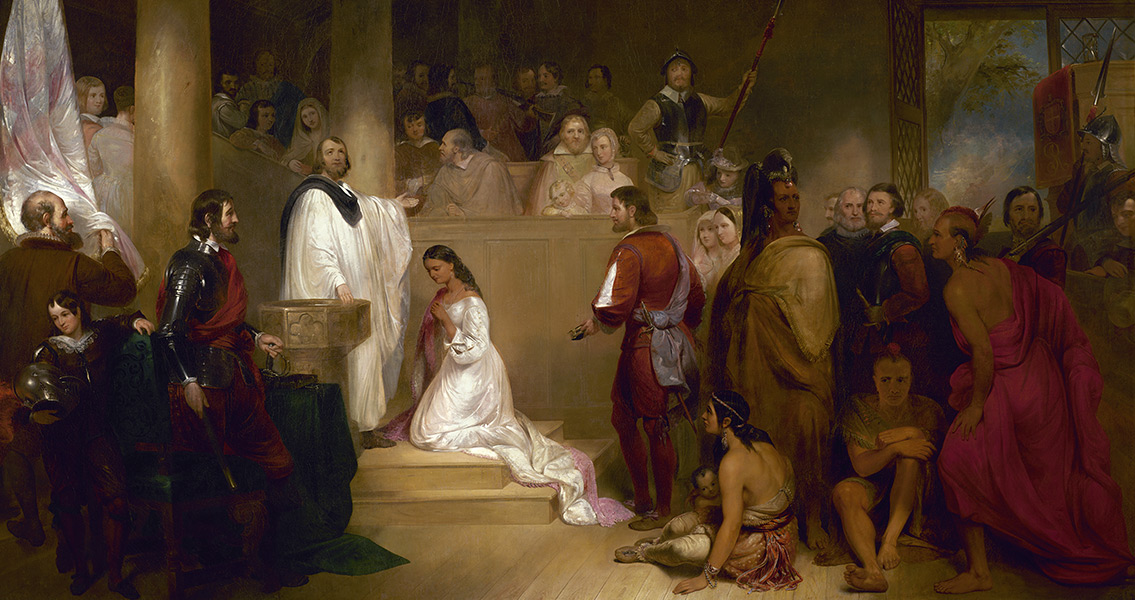<![CDATA[The 21st June marks the anniversary of the death of Pocahontas, the Native American woman remembered for providing a link between the indigenous people of North America and the European colonists. Her story was made famous in the 1990's following the release of a Disney movie about her life, a film which has been accused of glossing over or romanticising the true facts of Pocahontas' story and the reality of the New World in the early seventeenth century. First hand sources on her life are scarce. Much of the story comes from the accounts of John Smith, an English colonist whose life became intertwined with Pocahontas'. Smith's testimony was written after her death, however, and historians have since argued that it was deliberately designed to further a narrative of Native American history which portrayed them as dangerous savages while glorifying Smith. More recently a sacred oral history of the Mattaponi has described Pocahontas' life, and disagrees with the 'English' versions on several key details. Most importantly, it should be noted that there is no record from Pocahontas herself, we can never know her feelings and opinions on events. Pocahontas was born in around 1596, in what is now West Virginia, USA. She was the daughter of Wahunsenaca, the chief of the Powhatan - an alliance of over 30 Algonquian speaking tribes which encompassed over 25,000 people at its peak. Her parents named her Amonte, and she was also called Matoaka (meaning snow feather) in private. The name 'Pocahontas' was in fact a nickname given to her by her father to reflect her personality, it means "playful one". In 1607, English settlers reached and began to settle what is now Jamestown, an event which would prove a turning point in Pocahontas' life and the history of the Native Americans living in this part of North America. Aside from the fact she was raised in a privileged family, Pocahontas' live was fairly typical for any girl in the Powhatan tribe. Certain accounts have suggested that she was the favourite daughter of Wahunsenaca, which could explain how she became so significant to both the Native Americans and the colonists. John Smith, one of the Jamestown colonists, was supposedly captured by Native American Indians in the winter of 1607. According to legend, he was brought to Wahunsenaca, where it was decided he would be executed. As a warrior prepared to smash Smith's skull with a club, Pocahontas intervened and saved him from his fate. Some have suggested that the whole event was a fabrication, while others have argued that Smith's life was never really in danger, (although he might not have known it at the time) and in reality it was all part of an elaborate ritual to initiate him into the tribe. Whatever the truth of the first contact between the colonists and the Native American Indians, for a few years at least they seemed to coexist reasonably peacefully. The colonists were struggling to feed their communities, and the Native Americans started to trade food and crops with them, with Pocahontas often accompanying the deliveries to Jamestown. Around 1609, this relationship began to deteriorate, a bad harvest had meant the Native Americans could no longer spare any food to trade, and hints of the rivalry which would prove devastating to Native American communities in North America started to appear. In 1613 Pocahontas was taken hostage by the English colonists. Due to the scarcity of sources mentioned above, it is difficult to determine the exact details of how this event, and her captivity, unfolded. Ultimately, she never returned to her community, and details of her stay with the colonists, and more specifically, how she felt about it, can not be determined. What is clear is that during this period three key things happened, she became pregnant, she got married to John Rolfe, and she was baptised. Unsurprisingly, English and Native American accounts differ widely on these events. The latter often suggest that Pocahontas was raped during her stay, and forced into marriage afterwards. The former normally argue that her conversion to Christianity was voluntary, and the marriage to Rolfe was based on true love. In 1616 Pocahontas and Rolfe went to England, as part of a marketing campaign for the Virginia Company of London. She swiftly became a celebrity, meeting royalty and engaging in social events throughout the country. For the Virginia Company she was a marketing device, an example of the Europeanisation of a Native American that was intended to prove the inhabitants of the New World could be 'tamed'. Pocahontas would never return to her homeland. As the journey back to North America was starting in 1617 she fell ill with small pox. The ship was halted at Gravesend, where she succumbed to her illness shortly after being brought ashore. Her life is often celebrated as an example of a person who successfully bridged two vastly different cultures. The reality, as proven by the discrepancies between English and Native American accounts of her life, is far more complex. Image courtesy of Wikimedia Commons user: John Gadsby Chapman]]>
The Death of Pocahontas
